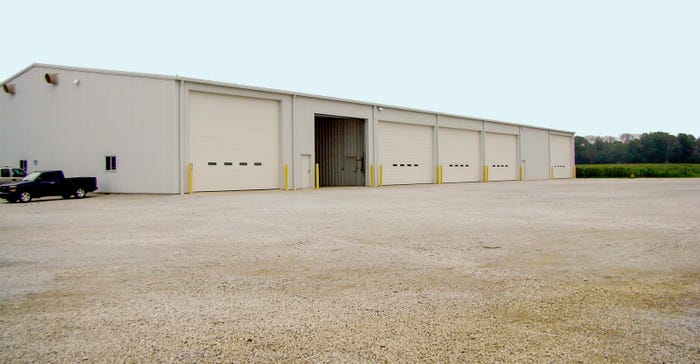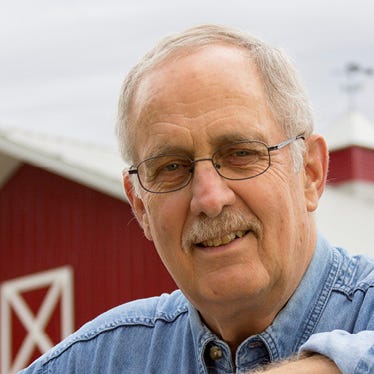September 9, 2017

A lot can change on a farm over four generations. In the case of Maple Farms Inc. near Kokomo, Ind., the acreage has grown from 160 to 5,700. A few years ago, the farm got out of hogs and now focuses on value-added crops. Two-thirds of the soybeans are seed beans for DuPont Pioneer, and 80% to 90% of the corn is food-grade. The Maple family operates a tiling and excavating business on the side.
Five Maple family members make up the management team, working with three full-time and two part-time employees. The management team is Scott, Mark, Tom, Daryl and Jason Maple. Two mostly retired dads, Bill and Charlie, still help out, as well.
As the farm has evolved, the Maples have adapted to the changes. One of those adaptations is their farm shop, constructed in 2012. Jason Maple’s primary responsibilities include machinery maintenance and personnel management.
“As machinery’s gotten bigger, our old shop lacked the height and length needed,” Maple says. “And we really needed a wash bay for semis. Because our specialty crops are on-call delivery, we use semis in really bad weather, and the salt was just eating them up.”
New shop evolves
After thoroughly assessing what they needed and visiting several other shops, the Maples designed two 30-by-100-foot bays on the end of their cold storage building. One serves as a wash bay and spray paint room; the other is a truck and equipment servicing area. In the latter, one of the central features is a 5-foot-deep service pit.
“Before, no one wanted to change the oil in bad weather,” Maple says. “But by having better lighting and being able to easily get under the trucks, it’s no longer a dreaded job. Now we’re able to catch a lot of things before they go wrong.”
Related: New report offers farm shop insight
All concrete in the two bays is 8 inches thick, with in-floor heating. Other primary features include a bulk oil center and a handy 20-by-30-foot storage loft. Maple says the shop and wash bay have been one of their better investments.
“It’s hard to quantify, but with the wash bay, we’re not replacing nearly as many parts on the semis, and they look better and have better trade-in value,” he says. “And in the shop, by catching things early, we can prevent breakdowns in-season. It also helps keep our employees busy working on things year-round, and helps us keep them on the payroll. We’re really glad we did it.”
Repurposing materials
Building shops like the Maples’ isn’t cheap. But it was made considerably less expensive by a combination of creativity, initiative and good old-fashioned thrift.
The I-beams that support the loft are reclaimed steel, as is the stairway leading up to it. Both were sandblasted and repainted. The loft railing that swings open for a forklift to raise supplies to the loft is made from old hog building gates.
Seventy-five percent of the conduit and wiring in the shop are from the hog buildings, as are most of the electrical switches and outlets. One particularly interesting feature in the loft is the parts bins. The Maples were able to obtain them by making a donation to the local rescue mission.
“It’s hard to say exactly how much we saved by using repurposed materials, but I know that the savings were pretty substantial,” Maple says.
Click through the slideshow to see some photos from the Maples’ farm shop.
Boone writes from Wabash, Ind.
About the Author(s)
You May Also Like






